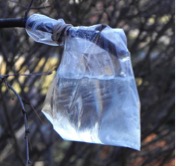By Dana DeMercurio
The humble coconut has undoubtedly had its fifteen minutes of fame – having gone from an exotic tropical treat you slurp on the white sand beaches of the Bahamas, to a pricey beverage consumed in the name of clean eating. It’s not surprising that the market for this super-drink has raked in $1 billion, turning it into quite the burgeoning industry over the years.
But coconut water may soon be on the back burner once birch sap hits the market.
Yup, that’s right–birch sap. If you’ve been keeping up with random beverage trends in Northeastern Europe and even parts of Asia, you’ll known that this super ingredient may have just what it takes to supersede the coconut and start a new craze of drinkable plant water here in the U.S. And the health benefits speak for themselves.
Like coconut water, birch sap is high in potassium, macronutrients and electrolytes, and has been consumed by those in Scandinavian and Baltic nations for centuries. Not only is this sustainable plant-based beverage a known detoxifier, it has also been traditional used to help treat hypertension, urinary infections, gout and kidney-related problems.
With the market’s heavy demand for coconuts and the havoc it’s wreaking on the small farms and communities growing them, tapping birch trees for sap is the smarter way for consumers to enjoy organic beverages.
Eager to try birch sap for yourself? Good news – you have a few options to choose from. If you have a birch tree in your backyard, the instructions for harvesting are pretty simple (keep in mind that late winter/ early springtime are the ideal seasons to tap birch trees for sap).
Here’s what you need to do:
- Drill a hole approximately 2-3 inches deep at an upward angle (which allows the sap to flow freely)
- Insert spigot (tap) into newly drilled hole, making sure to remove any wood shavings
- Hang a bucket/container from spigot to catch the sap. You can also connect a hose from the mouth of the spigot to flow down into a bucket/container (as shown here)

If power tools aren’t your thing, there’s an even easier way! Simply rubber band plastic bags at the end of clipped birch tree branches and watch as they fill up with crystal clear liquid.
Since it’s possible that harmful bacteria can be found in the sap, boiling the liquid for a brief period of time will kill any yeast or bacteria and is a smart option, however it will also kill the good bacteria which contains healthful probiotics and nutrients.

Like coconut juice, drinking it when it’s absolutely fresh from the source is the best, but preserving with canning is also a suitable option.
Not a birch tree parent? Not to worry. There are two companies that sell birch sap in the U.S., both of which get their product from Northern Europe, so you know it’s legitimate. Danish company Sealand Birk sells flavored birch sap water for $24.95/10 bottles, and Byarozavik – a U.S. based company whose name is Slavic for “birch tree water”- sells 12 bottles for $29.95.
Either way you chose to experience this latest and greatest health food, whether tree tapping or adding it to your online shopping cart, definitely give this one a try before another craze comes along.
